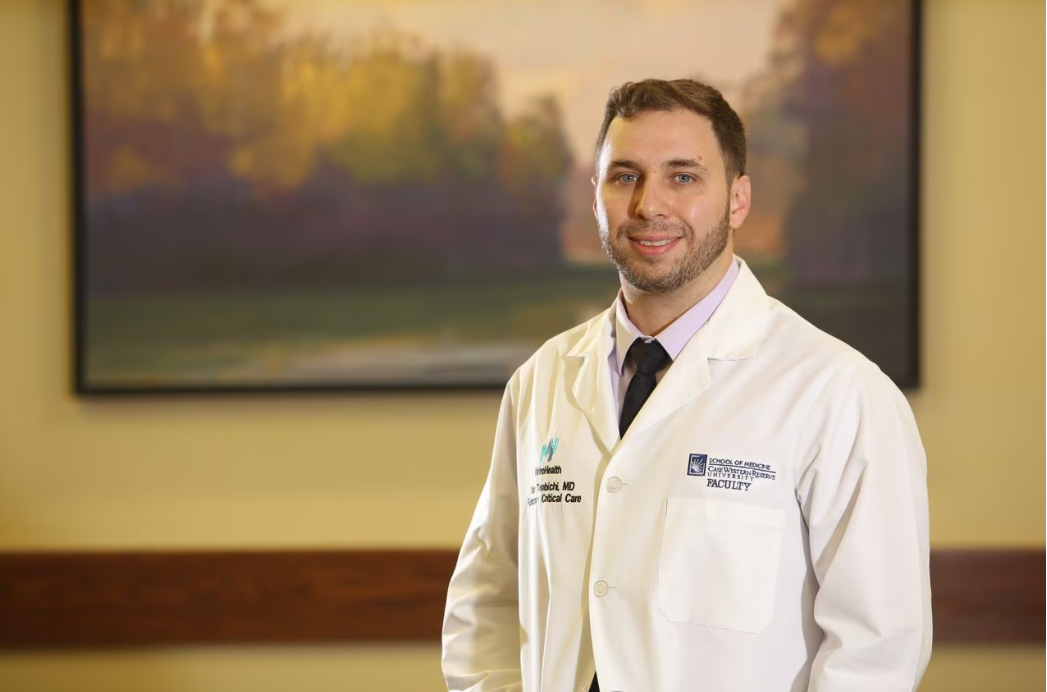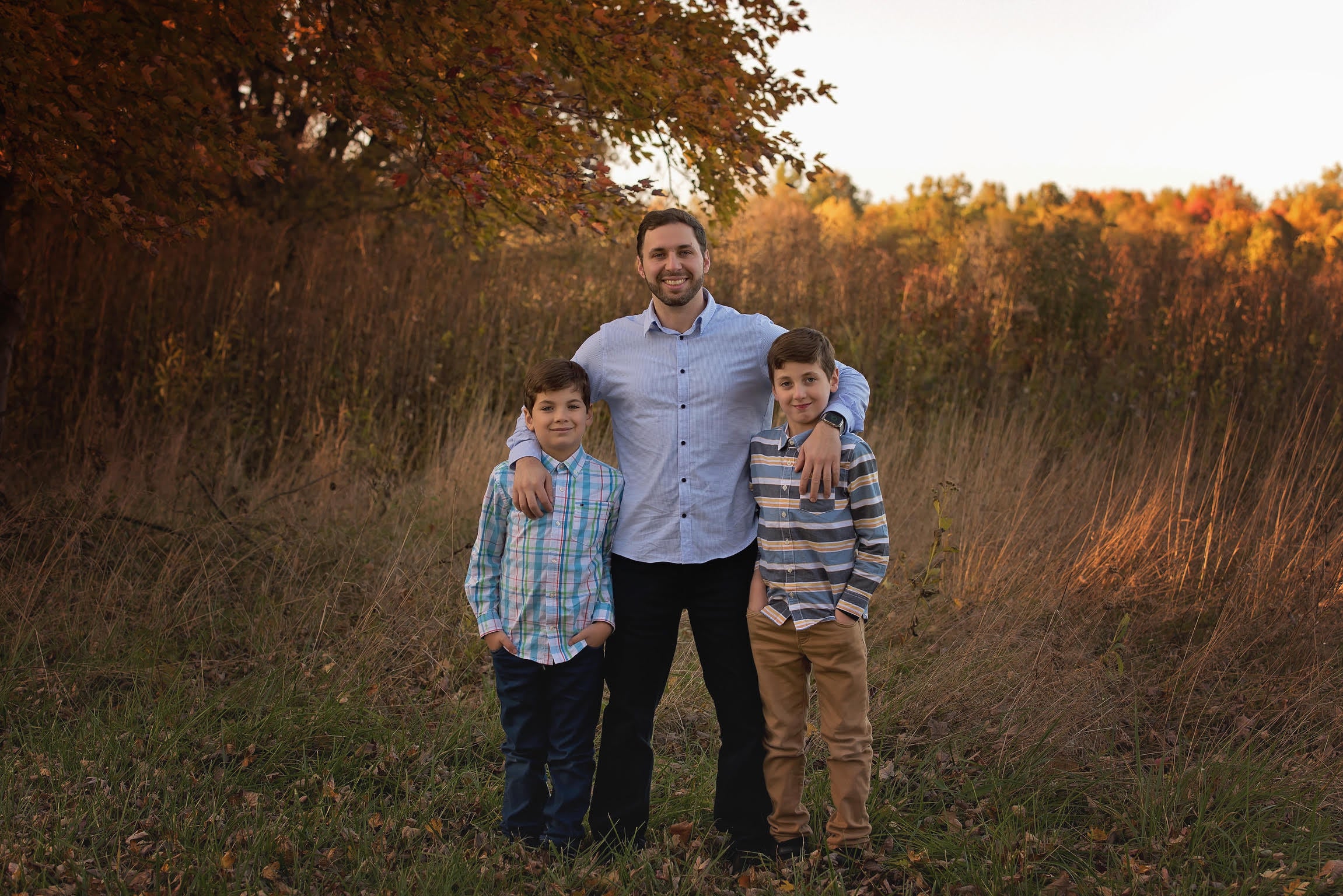Dr. Tarabichi’s Data Obsession Shines in the Clinical Space
This article is a part of our Health Disparities Researcher Feature series.
Yasir Tarabichi, MD, pulmonary, sleep, and critical care physician at MetroHealth Medical Center, has always been a self-proclaimed “tech and data geek”. Figuring out early in life that his skillset was data-based, Dr. Tarabichi found himself frequently asking, “How can data make it happen? Make it better?”
Dr. Tarabichi was drawn to technology through video games and the early days of the internet. He taught himself to code before he developed an interest in medicine. Growing up having doctors in his family, he added, “It was hard not to be enamored by a prospect of a medical career.” After a brief foray in computer programming, he realized his heart was in the life sciences.
Ultimately, Dr. Tarabichi’s interest in medicine intersected with his data and analytics background. These skills made him an exceptional fit for critical care as his specialty. He explained that wearing many hats, including: an intensivist (critical care), physician-informaticist, and director of clinical research informatics, he is always, “swimming in data” that he must make some sense of.
Dr. Tarabichi shared a typical day during the height of the COVID-19 pandemic. He explained that his team had to develop changes in the electronic health record (EHR) and new analyses to respond to the emergency. Dr. Tarabichi’s North Star was guided by questions like, “How can technology help us provide the best care to our patients? With the transition to virtual care, how will we make sure nobody gets left behind?”
In the intensive care unit (ICU), he cared for the sickest COVID-19 patients. Doctors there navigated difficult life or death situations while making time-pressured decisions that were without 100% certainty. They make their best judgment based on continuous streams of data such as vital signs that are run many times an hour, labs drawn every couple of hours, and ventilators measuring how a patient is interacting with machines. “This is a huge amount of data and it is easy to get overwhelmed. We have to figure out what is relevant,” Dr. Tarabichi said.
As a physician-informaticist, Dr. Tarabichi is responsible for maintaining and developing health information technology systems. Physician-informaticists are the translators between technology and clinicians–they understand both sides of the equation.
As the Director of Clinical Research Informatics at MetroHealth, Dr. Tarabichi’s goals are to use technology to connect researchers to the data and the patients they need to carry out their science. During emergencies like the COVID-19 pandemic, he can help develop research pipelines to gather insights with urgency because of his ability to access, aggregate, and analyze large amounts of data.
How does Dr. Tarabichi gather large amounts of data quickly? The EHR. “Love it or hate it, it’s the way we provide care to our patients – our tool. It’s also an imperfect reflection of reality, in all its messiness. The EHR shows us the disparities in care and access that we know exist. But the EHR can also be the tool we use to mitigate these disparities and close the gaps we find.,” Dr. Tarabichi explained.
Dr. Tarabichi’s interest in the research realm involves assessing the fairness and equitability of predictive models that use EHR data. One example is the creation of a machine learning model that predicts the likelihood that a patient wouldn’t show up to a visit. So called “no shows” result in loss of opportunity for patients and less revenue for healthcare systems. Some systems solve the problem by overbooking patients, but that can make the experience worse for everyone (especially if all the patients show up). Dr. Tarabichi and his team used a randomized controlled study to demonstrate that by identifying those likely to not show and providing them with a personal to reach out to patients, the frequency of no-shows could be substantially reduced. The intervention made the biggest improvement in racial and ethnic minorities and flattened a racial disparity in access that was present before the intervention.
Another example is the development of a novel-application driven rapid outpatient diagnostic program for patients who had CT scans that could be concerning for lung cancer. Dr. Tarabichi and his team showed how the program helped clinicians more quickly identify patients at high risk of lung cancer and improve their access to expedited diagnosis and care.
Dr. Tarabichi’s key message to the research community is, “[...] it’s time to stop proving disparities exist and eliminate them. There’s a lot of power in health information technology and EHR data that we can use for good in this space.”
Fast Five with Dr. Tarabichi
- Favorite thing to do in Northeast Ohio: Enjoy the seasons and when the weather is not horrendous, we have cool trails. One of our favorites is Ledges Trail. When the weather stinks, he’s playing Minecraft with his kids.
- Favorite research innovation: Anything that promotes interoperability. All the amazing things that AI can do will always be stifled by the data silos we have in healthcare.
- Favorite restaurant in Northeast Ohio: Hot Chicken Takeover when taking the kids for a quick bite. Istanbul Grille has the best lamb kabobs.
- Favorite place to go in Northeast Ohio: Anywhere wooded.
- If I wasn’t a researcher, I’d be a…: Software engineer, no doubt.
Dr. Tarabichi is co-investigator of the MetroHealth Health Informatics Team with the Clinical and Translational Science Collaborative of Cleveland. He helps lead the overall design, execution, and dissemination of the efforts and projects related to health informatics at MetroHealth as part of the CTSC.



